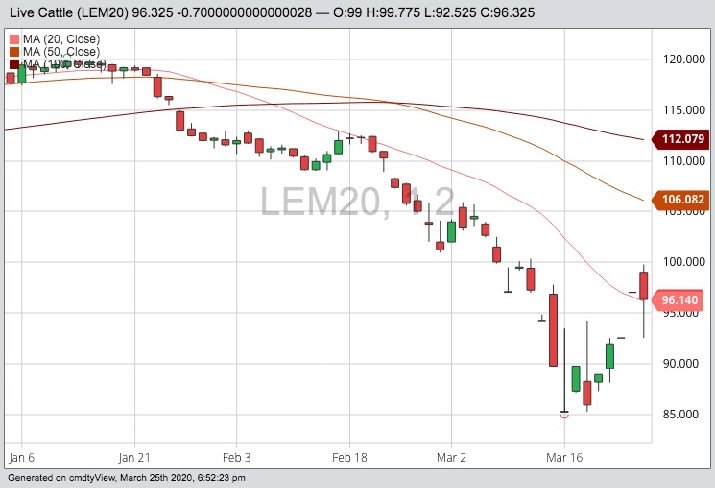Chicago | Reuters — Benchmark June live cattle futures on the Chicago Mercantile Exchange closed lower on Wednesday for the first time in five sessions as the market paused after a sharp rally driven by soaring retail beef prices.
Wholesale beef prices jumped and packer profit margins skyrocketed this week as the COVID-19 coronavirus pandemic prompted stay-at-home directives in at least 18 U.S. states, pushing consumers to stockpile meat and other groceries.
Cattle futures eased on Wednesday as traders paused to consider how long the beef boom would last.
Read Also

U.S. grains: Wheat futures rise on supply snags in top-exporter Russia
U.S. wheat futures closed higher on Thursday on concerns over the limited availability of supplies for export in Russia, analysts said.
“People are trading cautiously,” said Altin Kalo, agricultural economist for New Hampshire-based Steiner Consulting, adding, “Now that we’ve had this big spike, how much do (beef prices) start to come back, especially as the food service begins to slow down significantly?”
CME’s most-active June live cattle futures contract settled down 0.7 cent at 96.325 cents/lb. (all figures US$). The thinly traded April contract bucked the lower trend, however, rising 2.3 cents at 108.45 cents, reflecting strength in the cash cattle market.
CME May feeder cattle futures settled down 0.4 cent at 129.1 cents/lb.
Profit margins for beef processors eased slightly to $588.15 per head of cattle on Wednesday, after reaching a record high of $611.10 on Tuesday, according to livestock marketing advisory service HedgersEdge.com. That was up from $134.15 on March 13, less than two weeks ago.
CME lean hog futures closed lower, setting back after a four-session climb. June lean hogs settled down 1.25 cents at 71.75 cents/lb.
“Right now meat supplies are plentiful,” Kalo said. This week’s rally in hogs and cattle futures, he said, “is more trying to resolve some of the bottlenecks, rather than trying to ration the supply.”
Traders awaited the U.S. Department of Agriculture’s quarterly hogs and pigs report on Thursday. Analysts surveyed by Reuters on average expect the government to report the U.S. hog herd expanded 3.4 per cent in the December-February quarter from a year earlier.
— Julie Ingwersen is a Reuters commodities correspondent in Chicago.



















